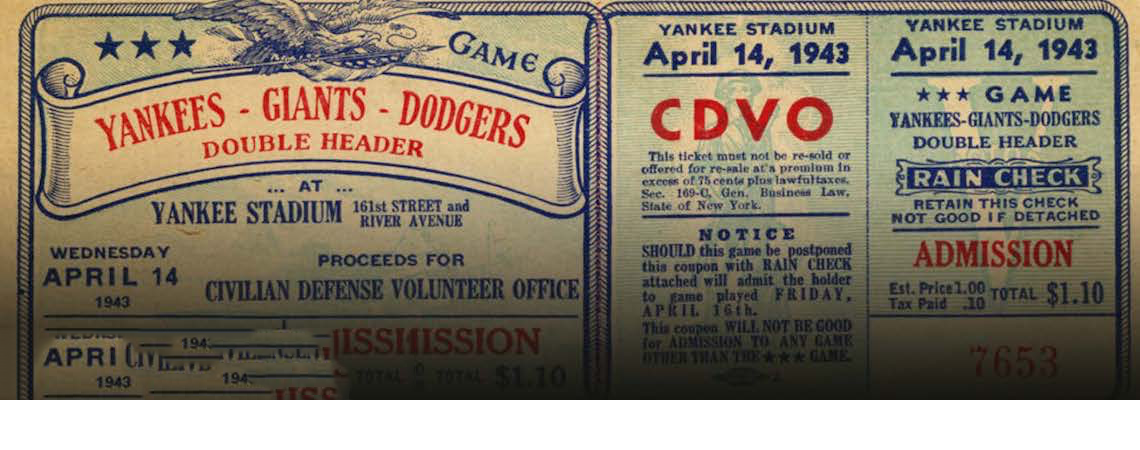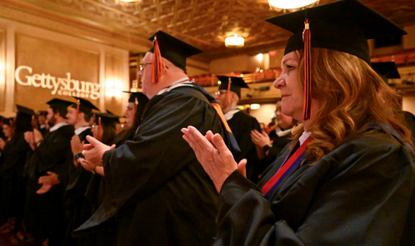The Battle of the Sexes
by Gail Collins
It’s hard to explain, if you weren’t there at the time, why the "Battle of the Sexes"—the 1973 tennis match between Billie Jean King and Bobby Riggs—was so important. The most enduring image from the event was the picture of Billie Jean in her tennis whites, being carried onto the court on a litter (a covered, curtained seat) by six beefy, underdressed young men in pseudo-gladiator garb. Her opponent was a short, loud-mouthed fifty-five-year-old hustler who had never been all that great a tennis player even in his long-ago prime.
Context is all.
In 1973, the story of women and sports in America was about to change so dramatically that the next generation would never remember a time when they weren’t expected to compete as fiercely as any male. It was the year when Little League Baseball was finally forced to accept girls, and a year after the Boston Marathon—where women had not only been barred but in one case physically dragged off the course—was finally opened to both sexes. The match was played just after Congress passed the soon-to-be-famous Title IX, but before it was interpreted as a guarantee that female students would not only have equal opportunities to study medicine or law, but also to play ball, race, and swim on school teams.
Billie Jean King had come up the old, hard way. Although she had already won a Wimbledon title in college, she put herself through school by working at a playground. (Her husband-to-be, Larry, got the college’s tennis scholarship even though, as he freely admitted, he was the equivalent of "the seventh man on a six-man team.") She became a pro, making enough to put Larry through law school—and noticing that while she made the money, it was her unemployed spouse who got all the letters to apply for credit cards.
Still, she and the other women on the tennis tour made less—ridiculously less—than the men. In 1970, King rebelled when she discovered that the Pacific Southwest Open was going to award the male winner $12,500 and the female winner $1,500. When the promoter refused to narrow the gap, King and eight of the other top women players organized a boycott. They went instead to Houston, where Philip Morris offered to sponsor a tournament just for them. It would be the beginning of the Virginia Slims Tennis Tour.
Women’s tennis began to catch on. (Its sponsor promoted its brand with a jingle that announced: "You’ve come a long way, baby, to get where you’ve got to today. You’ve got your own cigarette now, baby. You’ve come a long, long way!") Some of the male players—particularly the less than stellar men on the tour—were outraged at the idea that the top women were getting both more money and more attention than they were. Nobody was more vocal than Bobby Riggs, who loudly announced that women’s tennis "stinks" and that the women themselves "belong in the bedroom and kitchen, in that order."
It’s never been totally clear which came first for Riggs—the voluble sexism or the discovery that he could get far more notice as the spokesman for male chauvinism than he ever did as champion of the men’s senior tennis circuit. He issued a challenge to the top female players: prove that the best of them could beat the worst male pro, even one as worn as him. Promoters coughed up $10,000 for a match (about $50,000 in 2010 money) and Margaret Court, the Australian champion, readily accepted.
Court, who would later become a conservative preacher, was not political, and she was unenthusiastic about the women’s movement. The match with Riggs was, to her, just another exhibition. And she did not respond when King told her that it was crucial that she win.
"You have no idea how important this is," Billie Jean said.
Her worst fears were realized when the match was scheduled for Mother’s Day, and Riggs presented Court with a bouquet of roses, which the surprised Australian politely accepted. Watching, King thought that the game was over right then, when Court failed to realize that the right response would be to have "smacked him over the head with them." Court also failed to prepare for Riggs’s peculiar, slow game, and she was buried, 6-2, 6-1.
If Riggs’s hustle had been a success before, it was a media sensation after Court’s humiliation. Time put him on the cover. The pressure grew for King, who Riggs crowed was his next target. ("She’s the Women’s Libber Leader.") And King knew she had to take him on. The rest of the country—even the other women in the circuit—was beginning to think he might be right, that women were so inferior to male players that women’s tennis was not a serious sport.
Women’s place in American society had changed so fast over the preceding decade that many people were having trouble digesting it all. Riggs was a perfect vehicle for that discomfort—he didn’t seem mean so much as ridiculous. But he said things that a lot of others, particularly men, were thinking. The inevitable match between Billie Jean King and "the Male Chauvinist King" became, in one way, a lot larger than any one sports contest. It was going to be watched by more people than had ever watched a tennis match in history. ABC put it on in prime time, paying $750,000 for the rights to the broadcast at a time when it paid $50,000 for the rights to air Wimbledon.
On the other hand, the event was very silly. Riggs was a clown, playing to the crowd. And that was in many ways the most important point of all. The women’s liberation movement that had been fought out over the preceding decade had never been met by violent resistance, the way the Civil Rights Movement had. It was met with ridicule, and if women wanted to win, they had to learn how to live with being laughed at, how to turn the tables and make their humiliators look like the butt of the joke.
King had to beat Riggs at tennis, but that would have been no victory at all if she failed to beat him at his own game, the battle of hype. She had to prove that women could stand up to people who made fun of them. Thus the extremely chintzy litter, which a hesitant promoter brought out to King just a half hour before the big event, asking whether she might possibly want to use it to be carried onto the tennis court.
"God, that would be great," she said.
From the beginning, King satirized the moment as effectively as Riggs did. And then she got down to business and whipped him, 6-4, 6-3, 6-3. "I underestimated you," the winded Riggs said as he congratulated her.
Forty-eight million Americans watched the event. "That night King was both a shining piece of showbiz and the essence of what sport is all about," wrote Sports Illustrated. She became one of the most respected athletes of the era and an entire generation of Americans would remember the "Battle of the Sexes" the way they would remember a spectacular Super Bowl or a great World Series. She’d come a long, long way.
Gail Collins is a columnist for the New York Times and was the first woman ever appointed editor of the Times editorial page. Prior to that, she was an op-ed contributor, a member of the editorial board, and a columnist for the New York Daily News and New York Newsday. She is the author of several books including America’s Women: 400 Years of Dolls, Drudges, Helpmates and Heroines.
Suggested Sources
Books and Printed Materials
Books by Billie Jean King:
King, Billie Jean, and Frank Deford. The Autobiography of Billie Jean King. New York: Viking Press, 1982.
King, Billie Jean, and Kim Chapin. Billie Jean. New York: Harper & Row, 1974.
King, Billie Jean, and Christine Brennan. Pressure Is a Privilege: Lessons I've Learned from Life and the Battle of the Sexes. New York: LifeTime Media, 2008.
King, Billie Jean, and Cynthia Starr. We Have Come a Long Way: The Story of Women’s Tennis. New York: McGraw-Hill, 1988.
Books by and about Bobby Riggs:
LeCompte, Tom. The Last Sure Thing: The Life and Times of Bobby Riggs. Easthampton, MA: Black Squirrel Pub, 2003.
Riggs, Bobby, and George McGann. Court Hustler. Philadelphia: Lippincott, 1973.
Margaret Court’s memoirs:
Court, Margaret, and Barbara Oldfield. Winning Faith: The Margaret Court Story. Sydney: Strand, 2000.
An overview of events surrounding the King-Riggs match:
Roberts, Selena. A Necessary Spectacle: Billie Jean King, Bobby Riggs, and the Tennis Match That Leveled the Game. New York: Crown Publishers, 2005.
A quick overview of the history of tennis in America:
Brandt, Nat. "The Tennis Racket: How a Courtly Game Became Big Business," American Heritage, August/September 1981.
For the changes happening to American women—and Americans in general—in the 1960s and 1970s:
Berkowitz, Edward D. Something Happened: A Political and Cultural Overview of the Seventies. New York: Columbia University Press, 2007.
Bloch, Avital H., and Lauri Umansky, eds. Impossible to Hold: Women and Culture in the 1960's. New York: New York University Press, 2005. [Collection of essays, including one on King.]
Frum, David. How We Got Here: The 70's, the Decade That Brought You Modern Life, for Better or Worse. New York: BasicBooks, 2000.
Kaufman, Will. American Culture in the 1970s. Edinburgh: Edinburgh University Press, 2009.
Schulman, Bruce J. The Seventies: The Great Shift in American Culture, Society, and Politics. New York: Free Press, 2001. [A social history.]
Documentaries
King, Billie Jean, Arthur Ashe, and Bud Collins. A History of Tennis. Arthur Ashe Collection. New York: HBO Studio Productions, 1988.



